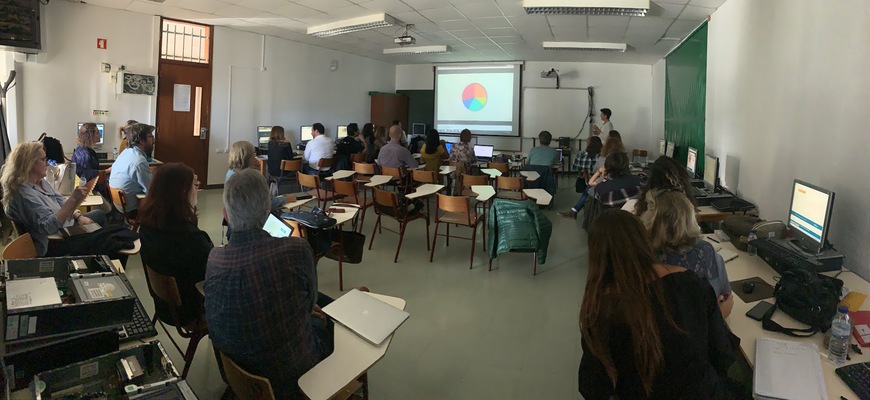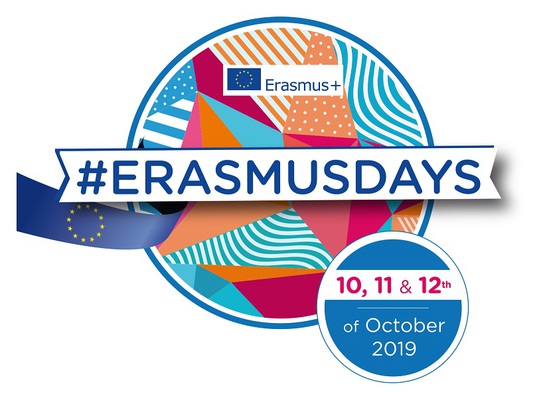
In Italy: Air/Water Experiments
In the first experiment, students connected wires and battery to a lamp, and tried to run the wires through glasses of water. Plain water did not conduct electricity, and therefore, the lamp did not light up. However, once the water was made salty, it became conductive, due to the ions in the water, and then the lamp lit up.
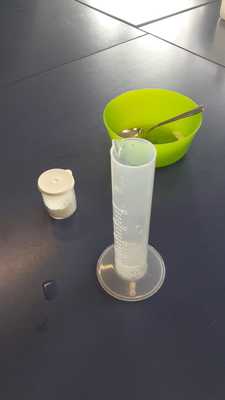
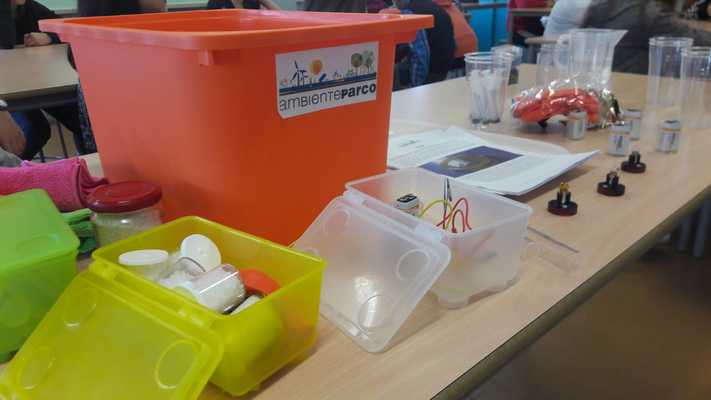
For the second experiment, students rubbed a plastic tube with a cloth, in order to charge it with static electricity. Students poured salty water out of a glass, into another glass, allowing it to fall in a long stream through the air. When the statically charged plastic tube was moved close to the stream of water, it changed course, and was repelled from the tube, without actually touching.
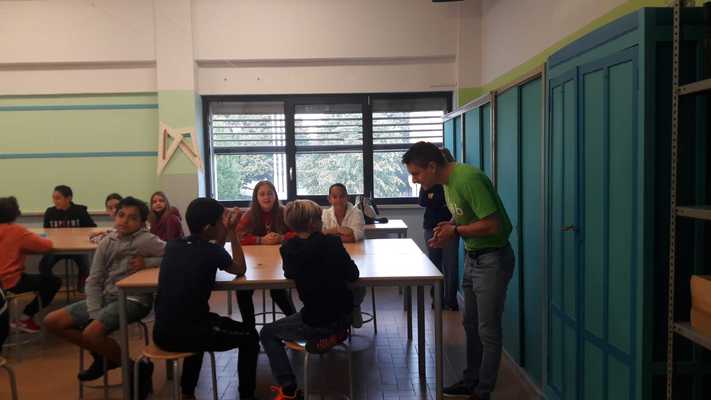
For the third experiment, students had to hypothesize what would happen when a paperclip would be placed on top of water. Students believed that the paperclip would sink instantly, but instead, the paperclip floated. This is due to the paperclip having a light weight, and a relatively large surface area. The surface tension of water was strong enough to support the paperclip on top of the water without it sinking.
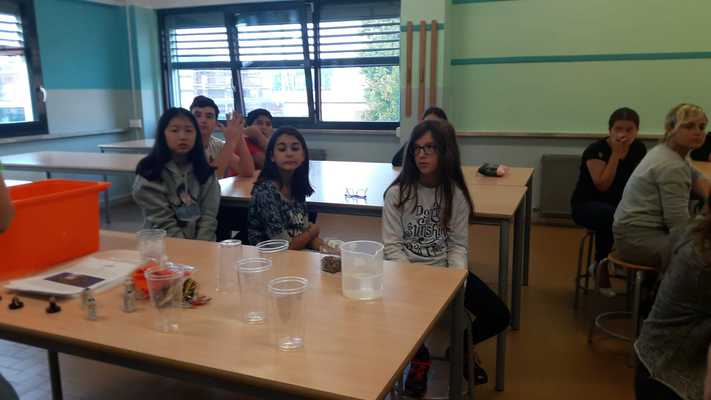
In the fourth experiment, students combined baking soda and vinegar inside of a cylinder. This chemical reaction produced CO2. They then put the cylinder over an exposed flame, and the flame was extinguished. Students learned that this was due to the CO2 choking out the flame. Fire needs oxygen to burn, and the CO2 cannot act as fuel for a fire. Without the presence of oxygen as fuel, the fire could not continue to burn, and it went out.
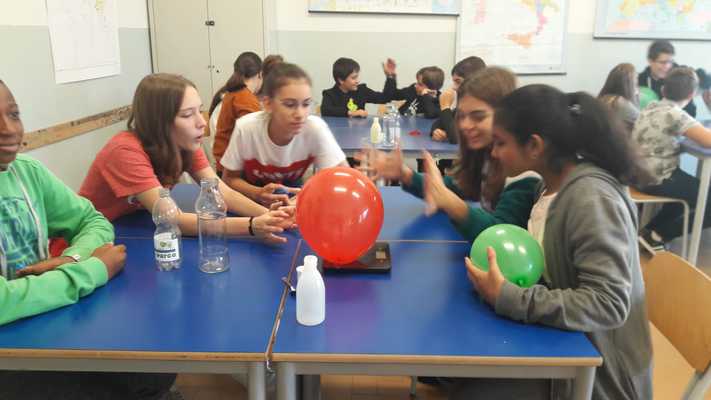
For the fifth experiment, there were two separate examples of how pressure and volume work. In the first, a lit candle was covered with a glass bell, sealing the flame inside. As the flame consumed the limited oxygen in the bell, it went out, as it had no more oxygen to burn. In the second example, a balloon was tied off, then placed under the glass bell. A machine was used to vacuum all the air out of the glass bell, reducing the pressure. As the pressure was reduced inside of the glass bell, there was less pressure acting on the balloon, working against the air inside. While the pressure in the glass bell was reduced, the balloon steadily grew.
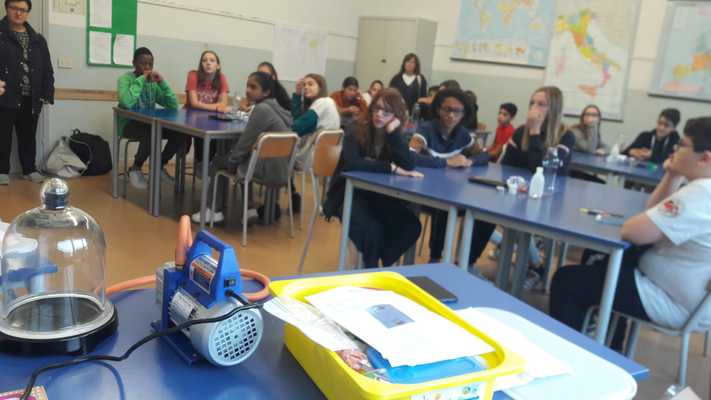
In Greece: participation in common events
2 studemts from Gymnasium of Platykampos were invited - among other five Greek schools - by the National Agency to participate in the event -ErasmusDays 2019 - in Athens at the National Opera. There, our students answered their questions in an experiential way about their experience of participation. How they see their European classmates, how they themselves have improved, how their school relationship with parents and local community has improved.
Our students answered the questions enthusiastically and enjoyed the participation.
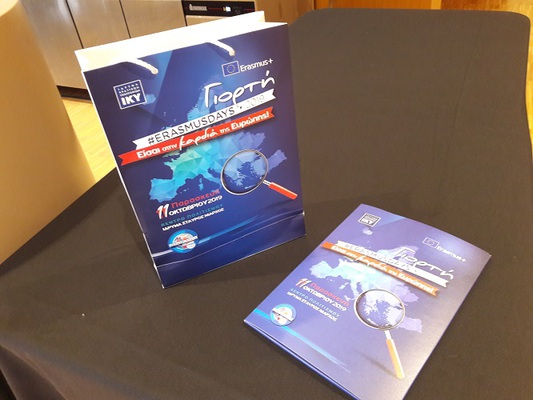
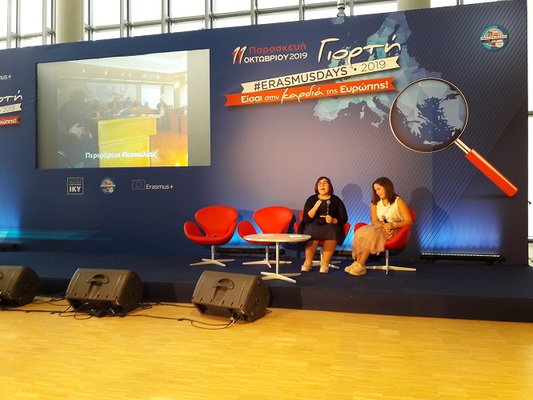
The rest of the students in the group participated in a joint event from all of the schools that impement erasmus project in Larissa. There, the students gave information about their projects to visitors, met and talked with other classmates, and presented some of the activities.
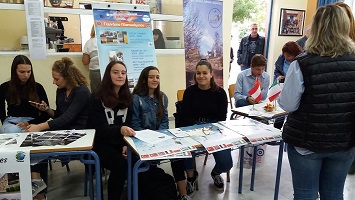
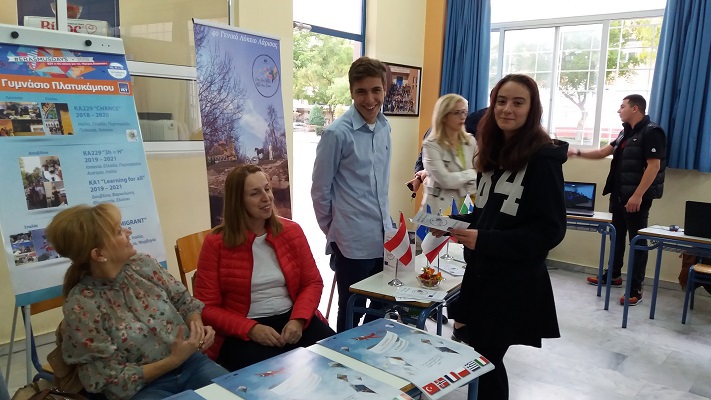
In Poland
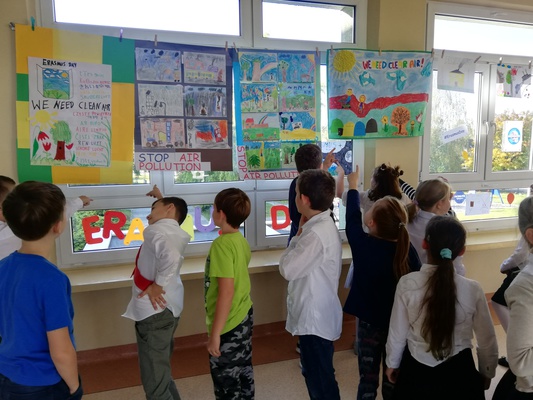
Each class made posters. They presented ideas how to protect the air and the sky. Children learnt a song about protecting the air.
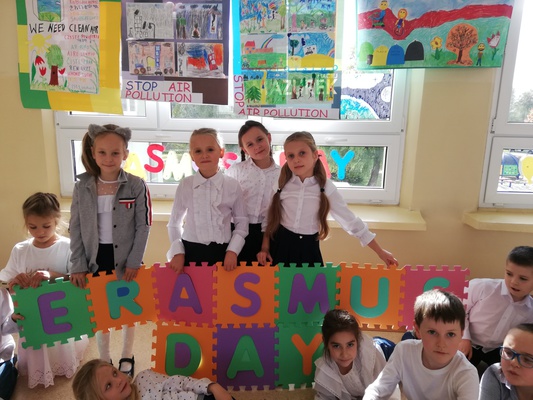
In Portugal
Today under the #ErasmusDays we had a training of three hours, for 25 teachers of our school, about the eTwinning ;)
